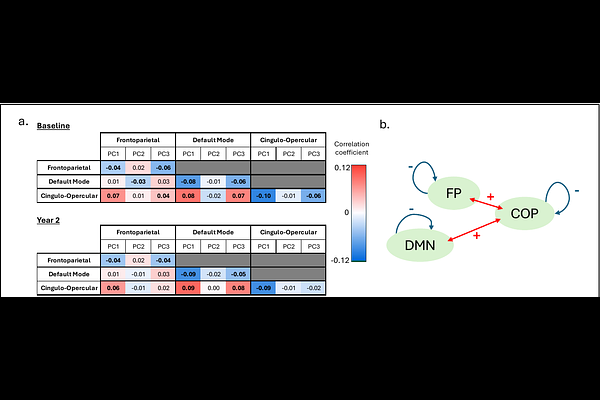Multidimensional components of impulsivity during early adolescence: Relationships with brain networks and future substance-use in the Adolescent Brian and Cognitive Development (ABCD) study

Multidimensional components of impulsivity during early adolescence: Relationships with brain networks and future substance-use in the Adolescent Brian and Cognitive Development (ABCD) study
Cheng, A.; Riley, S. J.; Kohler, R. J.; Umutoni, F. A.; Potenza, M. N.; Lichenstein, S. D.; Holmes, A. J.; Bzdok, D.; Yip, S. W.
AbstractImpulsivity is a multifaceted construct that typically increases during adolescence and is implicated in risk for substance use disorders that develop later in life. Here, we take a multivariate approach to identify latent dimensions of impulsivity, broadly defined, among youth enrolled in the Adolescent Brain and Cognitive Development (ABCD) study and explore associations with individual differences in demographics, substance-use initiation and canonical resting state networks (N=11,872, ages ~9-10). Using principal component analysis, we identified eight latent impulsivity dimensions, the top three of which together accounted for the majority of the variance across all impulsivity assessments. The first principal component (PC1) was a general impulsivity factor that mapped onto all impulsivity-related assessments. PC2 mapped onto a \'mixed\' impulsivity style related to both poorer, less attentive performance on the SST and decreased delay discounting. PC3 linked externalizing behaviors across multiple measures with indices of delay discounting, making delay discounting the only impulsivity-related assessment to load on all three of the top PCs. Multiple impulsivity PCs were significantly associated with subsequent initiation of alcohol and cannabis use. Finally, we found both cross-sectional and longitudinal associations between the PCs and functional connectivity between and within frontoparietal, cingulo-opercular, and default mode networks. These data provide a critical empirical baseline for how facets of impulsivity covary in early adolescence which may be tracked through future waves of ABCD data, enabling longitudinal elucidation of how dimensions of impulsivity interact with other individual and environmental factors to influence risk for substance use later in life.